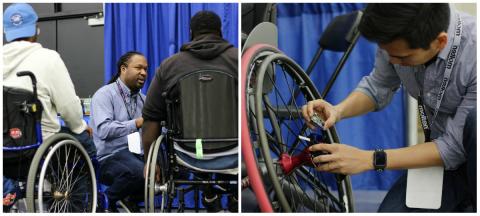Accessibility and Assistive Technology
Accessibility work is a crucial part of computer science, dedicated to making inclusive technology for everyone.
We prioritize accessibility throughout the process of designing and developing hardware, software and websites because all individuals deserve the opportunity to enjoy these digital interactions.
Disabilities are common and can be situational, temporary and permanent in duration. For example, visual and hearing impairments, mobility challenges, and learning disabilities can impact how individuals interact with technologies. Since abilities can vary widely by person and situation, research is key to understanding user needs and informing the design experience. There are many areas to study within the HCI + accessibility field, such as assistive technologies, adaptive interfaces, alternate input devices, data visualizations, and using voice and speech as inputs, just to name a few.
A commitment to accessible computing reflects our values of inclusivity and equality, and following the best practices of accessible design often improves user experience for everyone in the community.
Students who want to learn more about this HCI research area might be interested in:
- Occasional courses, such as 05-499/05-899: Special Topics: Accessibility: A Guide to Building Future User Interfaces
- Following the work at ASSETS the International ACM SIGACCESS Conference on Computers and Accessibility

HCII Researchers To Study Improving Algorithm, Computer Science Education as Part of CERES Network
NEWSResearchers in Carnegie Mellon University's Human Computer Interaction Institute will collaborate with institutions around the world to tailor digital technologies to help children and fam...

SpokeSense
PROJECTA Wearable Fitness Tracker for Wheelchair Athletes Information provided by traditional fitness trackers is not always relevant to athletes of all abiliti...

VizLens
PROJECTVizLens: A Robust and Interactive Screen Reader for Interfaces in the Real World The world is full of physical interfaces that are inaccessible to blind ...

Tiramisu
PROJECTThe Tiramisu project investigates how social media can provide new ways for citizens to take ownership of and responsibility for their public services. In...

